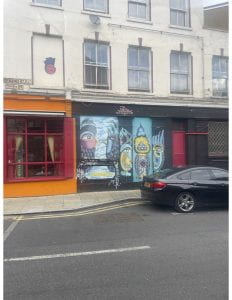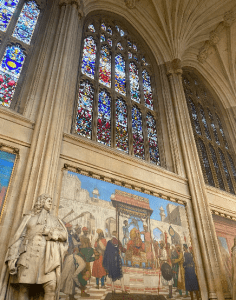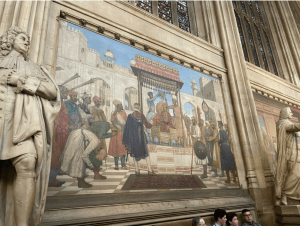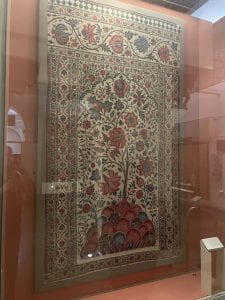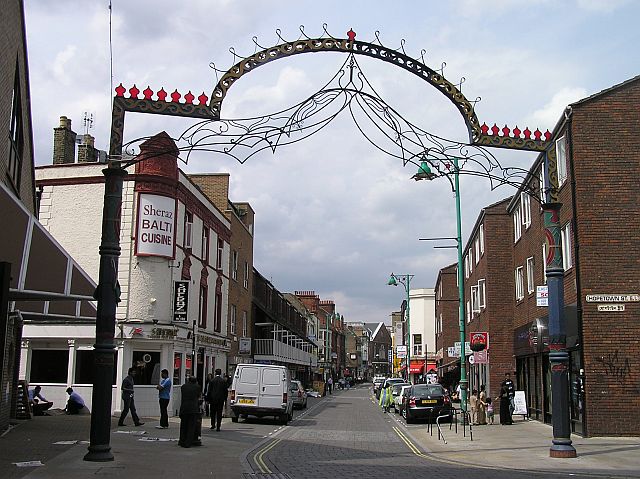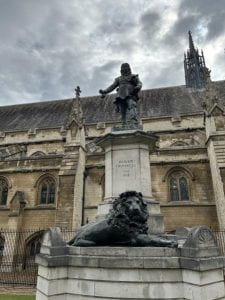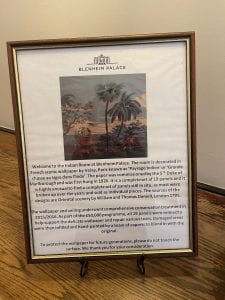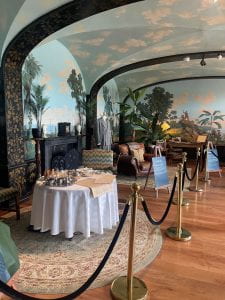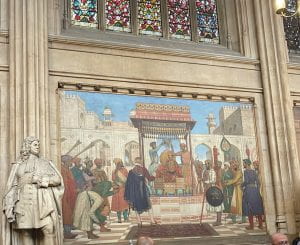Historically a safe haven for culture and marginalized groups, London’s Brick Lane is an ever evolving and vibrant place. The first element to catch my eye upon crossing the threshold of the iron archway demarcating this special pocket of the East End of London is the abundance of street art. Some of it is clearly commissioned, while an equal amount is clearly not, but all of it breathes life into the infrastructure of Brick Lane. It serves as a metaphor for the colorful culture that makes the area so distinctive.
Officially renamed Banglatown in 1997, the southern stretch of Brick Lane has served as home to a rich Bangladeshi culture for some time now. The future, however, remains uncertain. The Bangladeshi community is currently fighting to maintain their foothold on Brick Lane, but gentrification is creeping in. What was once a land of opportunity for immigrants is now becoming a battleground between the old and the new. The Old Truman Brewery marks a point of definitive division, with trendy businesses specializing in a higher price point having driven out the Bangladeshi communities on the north end. The south end remains largely dotted with Bangladeshi restaurants and retailers, but new businesses are beginning to crop up there as well. At its peak in the mid-2000’s, this same area was home to roughly 60 curry restaurants. Beyond Banglatown reports that there were only 35 curry restaurants south of Truman Brewery on Brick Lane in 2014, while there were a mere 20 remaining in 2019. With rent reportedly on the incline and profits on the decline, many were forced to sell out or permanently shut their doors.
With these figures and the situation at large in mind, I went into my first trip to Brick Lane and Banglatown expecting the worst. The Banglatown section of Brick Lane was made to sound like a relative ghost town today, with businesses desperately hoping for customers and the opportunity to remain in operation, but the scene I experienced was nothing like this. My trip was marked by packed streets, full restaurants, and plenty of activity on the south end. This experience made me hopeful for the future of Banglatown and convinced of its ability to make a comeback.
That being said, the impact of gentrification is impossible to ignore. The alley running between the Brick Lane divide at the Truman Brewery provided a solid example of this, with its location serving as a particularly poignant reminder. It was fully lined with tables full of hipsters, the type of young people more than willing to spend $8 on a latte with alternative milks and superfoods. They were quite clearly not the target market for the remaining traditional curry houses, but instead for the niche boutiques and expensive food vendors on the north end of Brick Lane. The sheer number of these individuals was jarring and gave context to the market supporting the gentrification of the area.
The walk back from dinner at Sheba to our bus along the Banglatown end of Brick Lane was most encouraging. As we walked past the lasting Bangladeshi businesses and restaurants, they were full of life and customers. Each curry house had a maximum of two open tables, with representatives from each pulling people off of the street to fill the few dining spots they had left. This final impression has left me optimistic about the future of Banglatown and eager to return myself.


